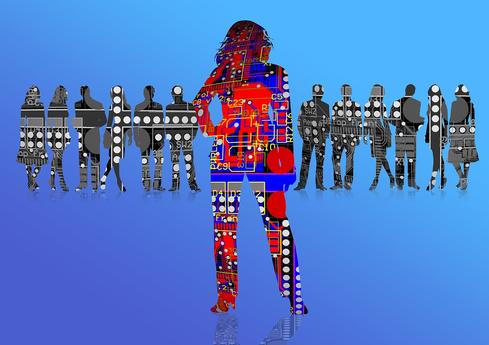Virtual Desktops Make The Grade At USCVirtual Desktops Make The Grade At USC
USC Viterbi School of Engineering is finding that VDI can replace computer labs for high-demand engineering students.


10 IT Infrastructure Skills You Should Master
10 IT Infrastructure Skills You Should Master (Click image for larger view and slideshow.)
Bricks are expensive. When you have to buy enough of them to build an academic hall filled with computer labs and classrooms, it gets very expensive, indeed. That's why the University of Southern California's Viterbi School of Engineering was open to the idea of trading real bricks and mortar for virtual desktops.
It's easy to wonder why any university would consider building a computer lab when students bring between five and seven Internet-connected devices with them when they come to school. It's a legitimate question, and there are two legitimate answers. One is graphics: Especially in the engineering and scientific disciplines, many applications have demands that go beyond the capabilities of the average laptop. The other is the software itself. It is far more cost-effective for a university to license advanced software for a lab full of computers than to try to put a legitimate copy of the software on every student's laptop.
Meeting Student Expectations
In a telephone conversation, Michael Goay, IT executive director at the Viterbi School of Engineering, said that traditional academic computing practices and modern student expectations add to the budget challenges his department faces. "Today's students come with higher expectations of IT. They expect anytime-anywhere access to instructional tools, class materials, and the support they need for projects," he said. "Students bring multiple devices and want to access multiple tools," Goay added, explaining that it's important to faculty that students have a uniform experience of the software no matter how it's accessed. That uniform experience is the goal of a project begun in early 2014 to make engineering applications available through a virtual desktop infrastructure (VDI).

The traditional model of educational computing required computer labs that could not be repurposed as general-purpose classrooms on the fly.
Admitting that VDI has been in academic institutions for years, Goay said that the aim of this project was quite specific. "Our intention was for graphics-intensive applications," he said. To meet the intention, the department matched VMware vSphere hypervisors with servers of two different configurations. According to a case study sponsored by VMware and NVIDIA on the project, the project is run on "... eight Dell PowerEdge R720 servers equipped with 384GB of RAM, Teradici APEX PCoIP-offload cards, and local SSDs that boot non-persistent linked clones." Divided into two groups of four, one group of servers carry two NVIDIA GRID K1 cards and one Teradici card each while the other group is equipped with two NVIDIA GRID K2 cards and two Teradici cards each.
[ Read VDI Prepares Sussex County, NJ, For Anything. ]
The first group of servers supports up to 32 simultaneous virtual desktops running heavily graphics-intensive applications. The second supports up to 192 simultaneous virtual desktops running applications with moderately intensive applications. In all cases, Goay said that the servers are, "... providing a set of non-persistent virtual desktops with a user profile and user storage. If they log in on Friday morning, the student gets a generic virtual desktop; they will save their data to a persistent storage that follows them."
Reducing Desks, Not Desktops
Goay is very clear that the VSI platform the school is providing is a replacement for lab computers that would traditionally offer access to specialized software: It is not a full-featured desktop replacement. He said, "Right now, we have about 8,000 students on the system. With any VDI deployment, 8,000 simultaneous users is expensive." Only a fraction of those 8,000 students will be using the system simultaneously. Goay said that the IT group is exploring options for systems that will provide greater user density per server with an eye toward offering desktop replacement for faculty and staff in the project's third year.

For current students, being able to access applications anytime, anywhere, and on virtually any device is a key to "customer satisfaction."
While the VDI deployment is bringing benefits to students and faculty, by allowing students to use specialized software on essentially any platform, at any time, and from any location, there are more tangible benefits that have won the project support from the administration. "The Viterbi School is facing increased enrollment," Goay said, explaining that one way the school is dealing with the increase is through greater use of educational applications for instructional purposes. "Creating new classes and building new labs costs a lot; space is a constraint," he said. "The pressure is there, and we have discovered that this approach brings on some relief in this area."
"Some classes can be taught in a general auditorium, and the faculty assume that the students are bringing their own computers," Goay said. The marriage of BYOD and high-quality access to specialized, high-demand software is a promising alternative to late nights in the computer lab. That seems to be satisfying the requirements of students and university administrators alike.
**New deadline of Dec. 18, 2015** Be a part of the prestigious information Elite 100! Time is running out to submit your company's application by Dec. 18, 2015. Go to our 2016 registration page: information's Elite 100 list for 2016.
About the Author
You May Also Like






